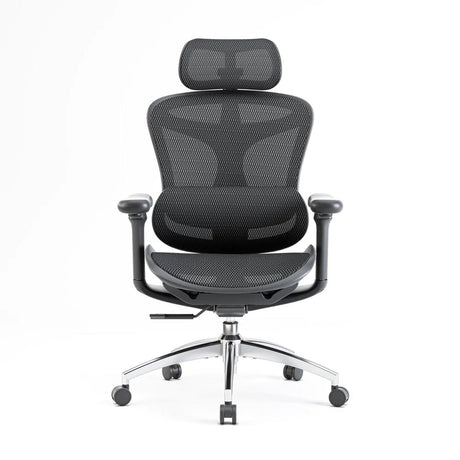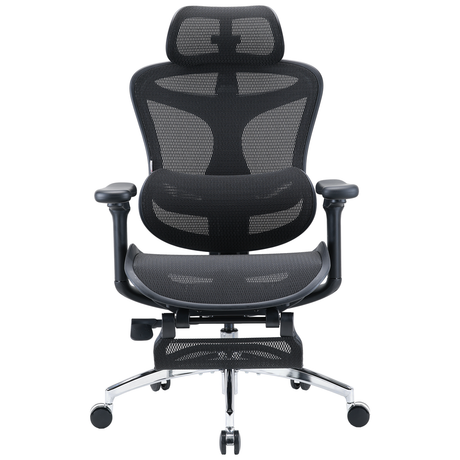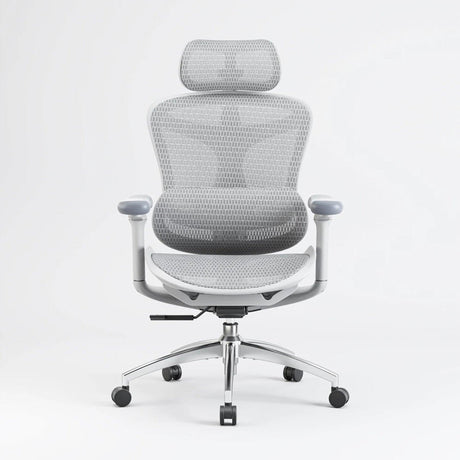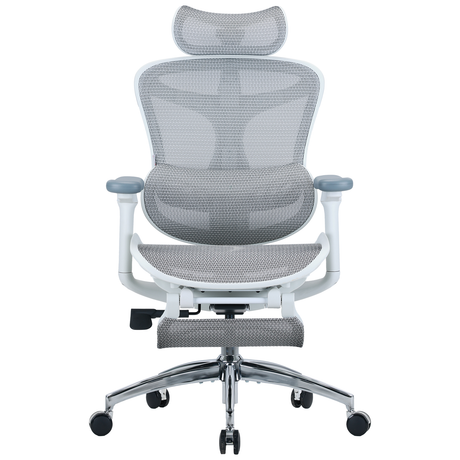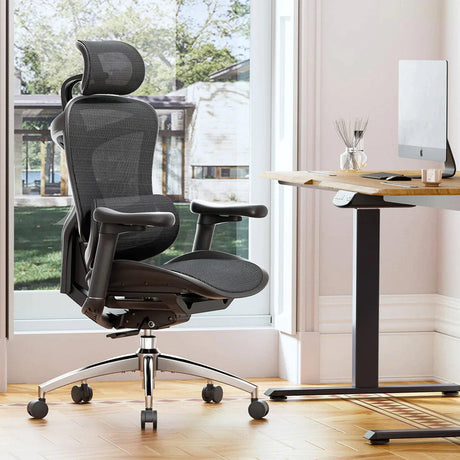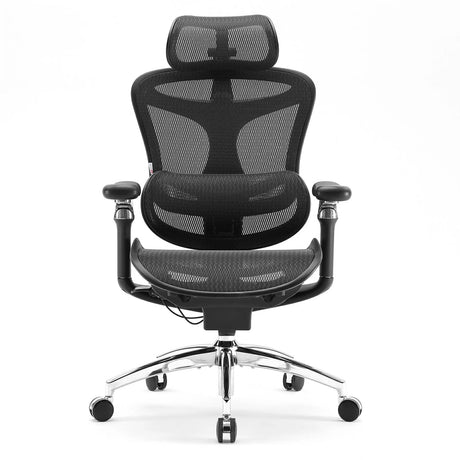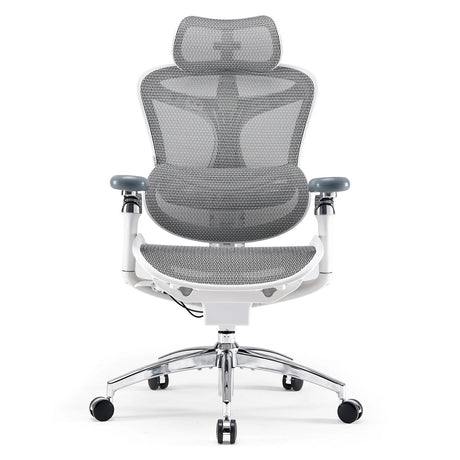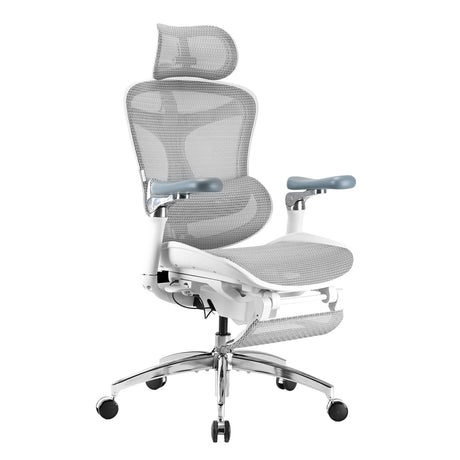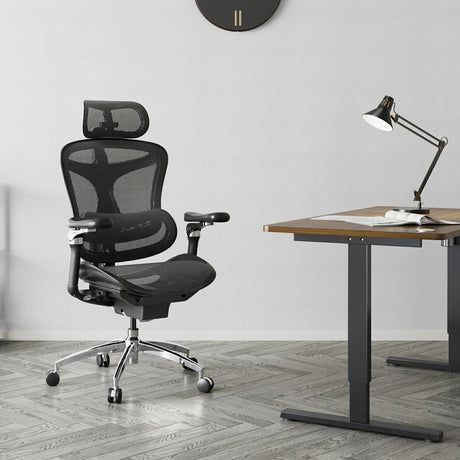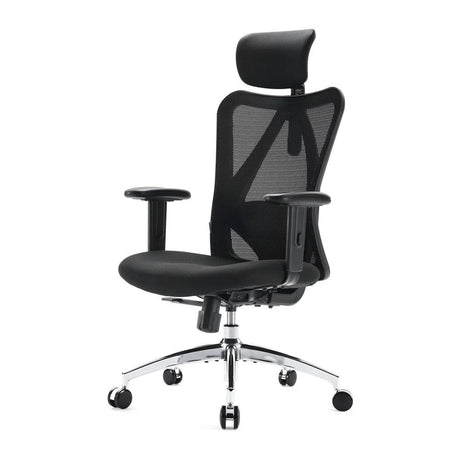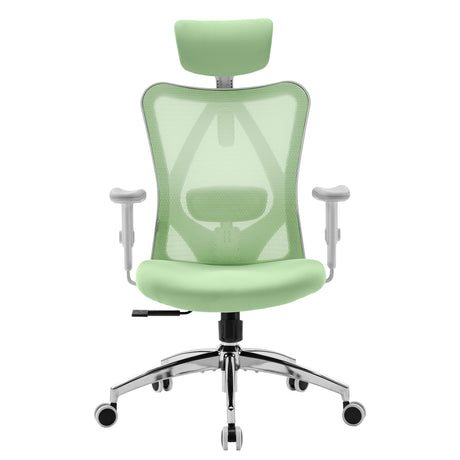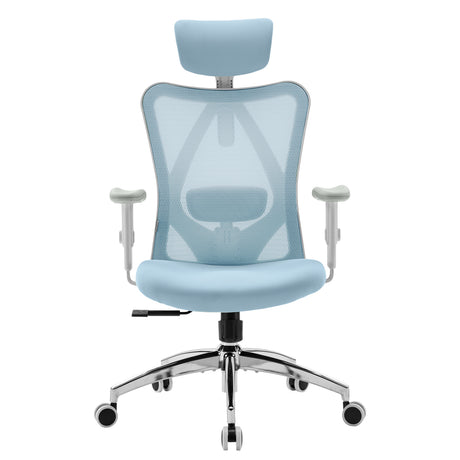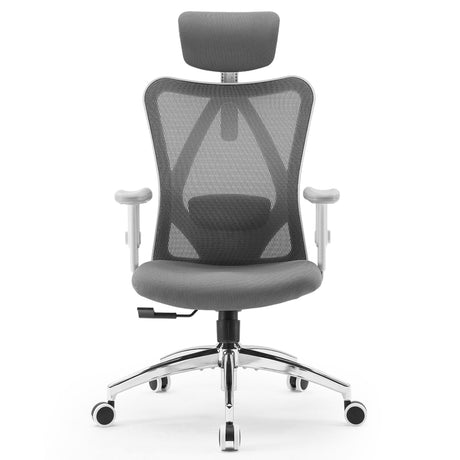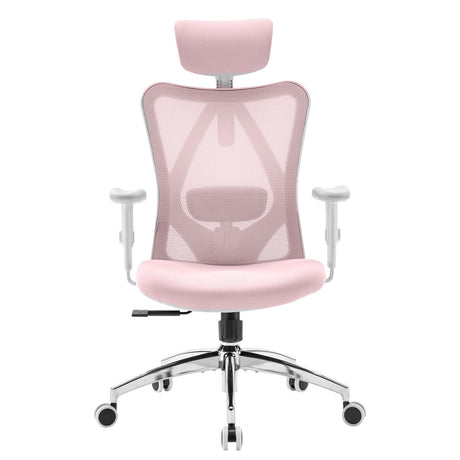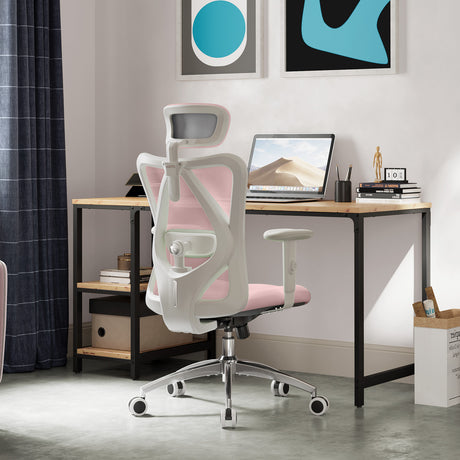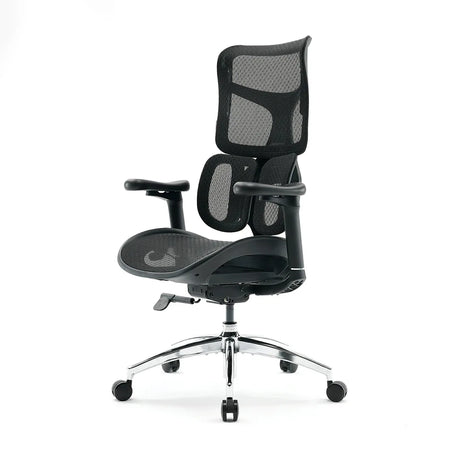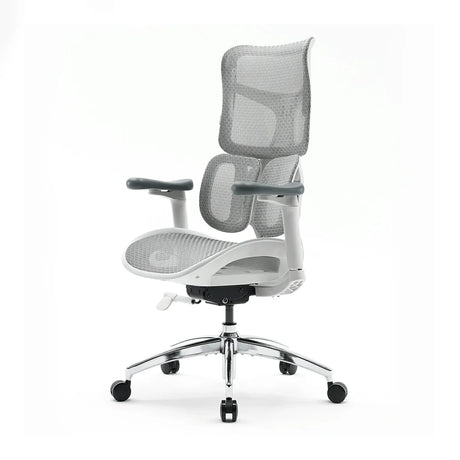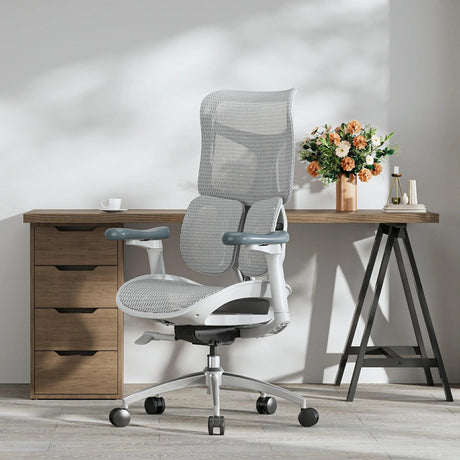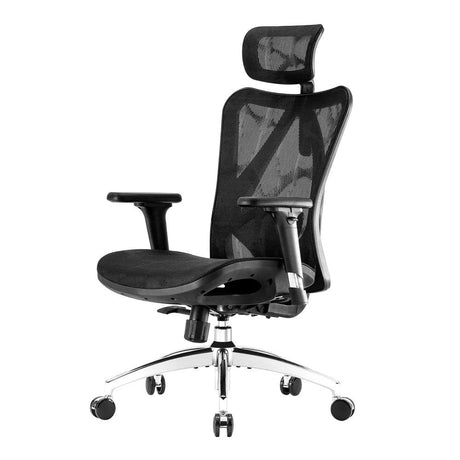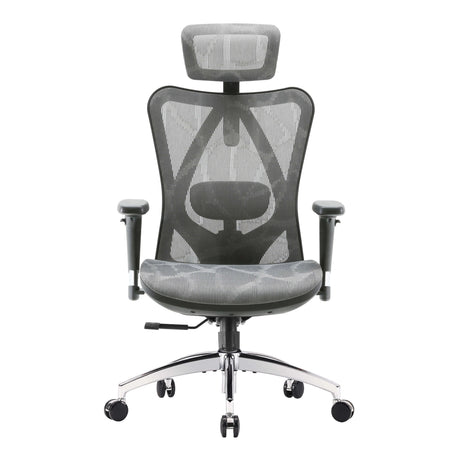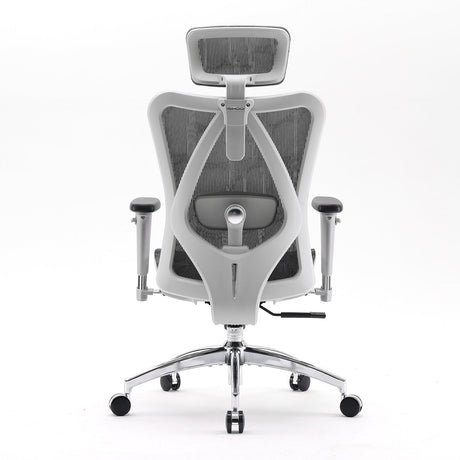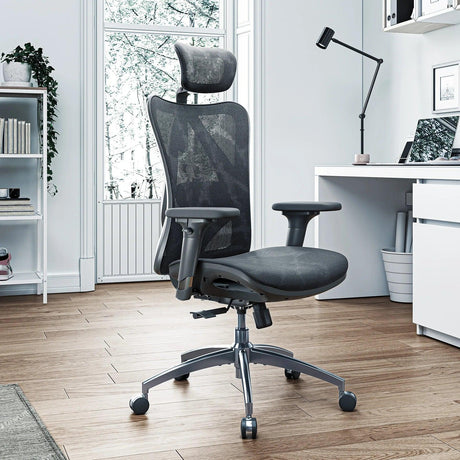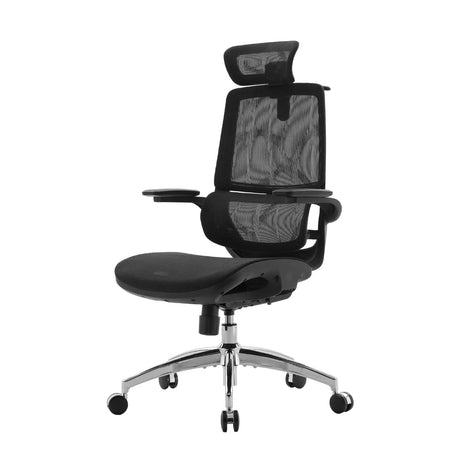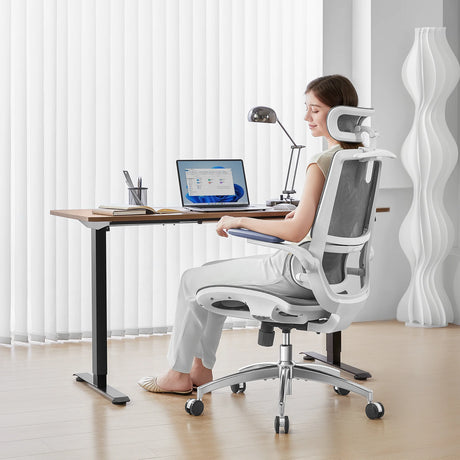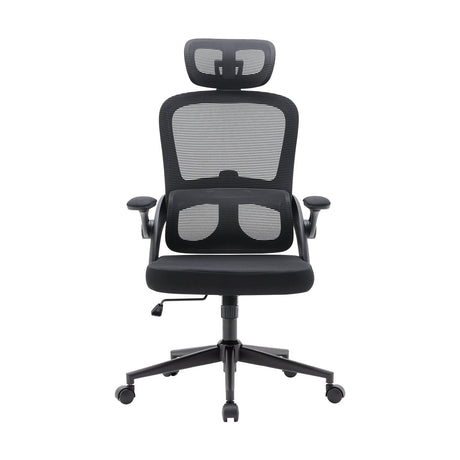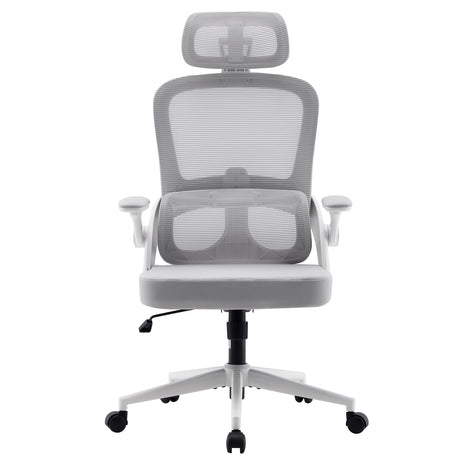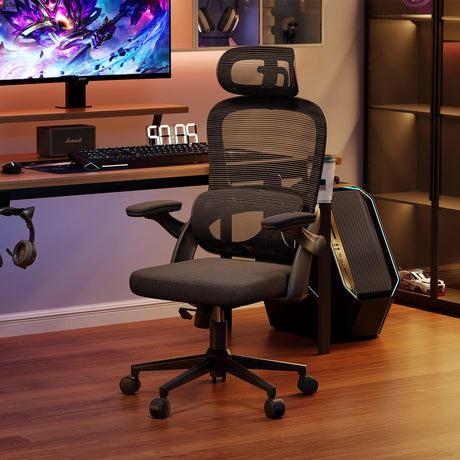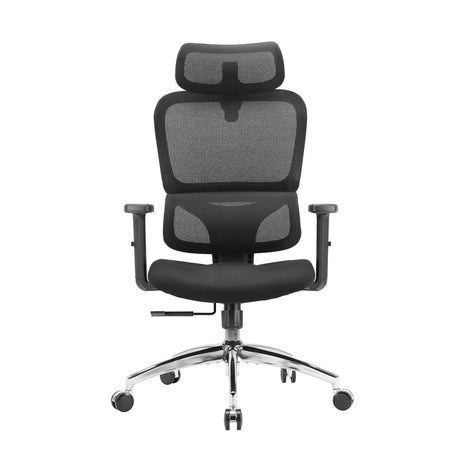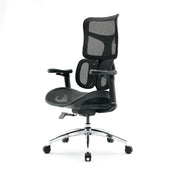In the age of hybrid and fully remote work, your office chair is no longer just a piece of ergonomic equipment—it’s a central fixture in your home décor. The days of hiding a clunky, purely functional black mesh chair in a spare room are over. Today, the perfect office chair strikes a delicate balance: it must provide the all-day support your body demands while seamlessly integrating with, and even enhancing, your personal home aesthetic.
This comprehensive guide is designed for the discerning professional who refuses to compromise on either style or substance. We will move beyond the basic ergonomic checklist to explore how material, color, silhouette, and architectural style choices can transform a necessity into a design statement. From Scandinavian minimalism to Mid-Century Modern warmth and Industrial chic, we will help you navigate the landscape of high-performance seating to find a chair that looks as good as it feels.
Part I: The Interplay of Ergonomics and Aesthetics
Before diving into design, it is crucial to understand that aesthetics should never completely overshadow ergonomics. A beautiful chair that causes back pain is a costly mistake. The goal is to find the intersection where optimal health and elevated design meet.
1. The Core Ergonomic Check: Non-Negotiables
Regardless of its style, your chair must offer fundamental support tailored to your body and your work habits. Look for:
-
Adjustable Lumbar Support: This is critical for maintaining the natural curve of your spine. A chair that offers both height and depth adjustment is ideal.
-
Seat Depth and Height Adjustment: Your feet should rest flat on the floor (or on a footrest) with your hips slightly above your knees. There should be a two-to-four-finger gap between the back of your knees and the edge of the seat.
-
Armrest Adjustability: Armrests should allow your elbows to rest at a 90-degree angle, keeping your shoulders relaxed and preventing strain.
-
High-Quality Mechanism (Tilt and Recline): The mechanism—often the most expensive component—determines the smoothness of the recline and how the chair supports you when leaning back. A synchronized tilt is often preferred, as the backrest reclines at a higher ratio than the seat pan, opening your hip angle and promoting movement.
2. Defining Your Chair's Role in the Room
Will the chair be a focal point or a supporting player?
-
Focal Point Chair (Statement Piece): If your home office is a dedicated room, or if you use a bold chair (e.g., a leather executive chair, a classic design reproduction, or a vibrant color) to define a work zone within an open-concept space. The chair sets the tone.
-
Aesthetic Strategy: Use contrasting materials (e.g., a velvet chair in a wood-heavy room) or a dominant color (e.g., emerald green, cobalt blue).
-
-
Supporting Player Chair (Blending Piece): If your desk is in a living area, bedroom, or a corner of the kitchen, the chair needs to seamlessly integrate with the existing décor. It should recede visually.
-
Aesthetic Strategy: Match the chair's legs/base to other furniture (e.g., wood to match a dining table), choose neutral tones found in the room's palette (e.g., light grey, beige), or opt for transparent/minimalist designs.
-
Part II: Matching the Chair to Your Home Aesthetic
The true test of your aesthetic eye is how well you can translate a broad design style into a specific piece of furniture. Below is a deep dive into popular home aesthetics and the corresponding office chair features that will ensure a perfect match.
1. The Minimalist & Scandinavian Aesthetic (Scandi-Mod)
This style prioritizes function, simplicity, light, and natural materials. The chair should embody 'form follows function' and avoid visual clutter.
| Chair Feature | Minimalist / Scandi-Mod Execution | Why It Works |
| Silhouette | Clean lines, no bulky padding. Thin backrests (often mesh or lightweight plastic), sleek bases. | Promotes an airy, uncluttered look. The chair visually disappears. |
| Material | Ash or Beech wood details (legs, armrests), light grey or white knitted mesh or felt upholstery. | Reinforces the natural, organic textures and light palette central to the Scandi style. |
| Color Palette | Whites, pale greys, oatmeal, or muted pastels (e.g., dusty blue, sage green). Black base is acceptable if the rest of the furniture is black, but silver/white is often preferred. | Ensures the chair doesn't absorb too much light or overpower the room's neutrality. |
| Key Models/Designs | Chairs with polished aluminum bases, breathable mesh backs, or a molded plywood shell base with a cushion. | Embraces an industrial-meets-natural simplicity. |
Aesthetic Tip: Look for chairs that offer flex or movement in the backrest rather than heavy cushioning, as this aligns with the style's emphasis on natural, dynamic forms.
2. Mid-Century Modern (MCM) Aesthetic
MCM is defined by organic curves, geometric forms, rich wood tones, and honest materials. The chair should feel sophisticated, timeless, and slightly vintage-inspired.
| Chair Feature | Mid-Century Modern Execution | Why It Works |
| Silhouette | Sculpted curves—molded shells, slightly flared armrests, a lower, wider profile (less imposing height). | Reflects the classic MCM design language seen in lounge chairs and dining sets (e.g., Eames, Saarinen). |
| Material | Walnut or Teak veneers on the seat back or arms, genuine or high-quality vegan leather (preferably with a slight sheen), or rich, textured wool/bouclé fabric. | Leverages the signature materials that define the MCM era's warmth and luxury. |
| Color Palette | Earthy jewel tones (mustard yellow, burnt orange, avocado green), rich browns, black, or cream/oyster white. | These saturated, nature-inspired colors were prevalent in 1950s and 60s design. |
| Key Models/Designs | Aluminum Group-style office chairs, chairs with a "star" or "four-point" polished aluminum base, or classic banker's chair inspired silhouettes (but with modern ergonomic function). | Pays homage to the iconic designs while offering modern performance. |
Aesthetic Tip: If you choose a leather MCM chair, ensure the base is a contrasting polished aluminum or chrome—not plastic—to maintain the high-end look of the era.
3. The Industrial & Urban Loft Aesthetic
This style celebrates raw, exposed materials, structural honesty, and a utilitarian feel. The chair should be robust, functional, and visually "tough."
| Chair Feature | Industrial/Urban Execution | Why It Works |
| Silhouette | Heavy-duty, robust frame, prominent screws/bolts, visible adjustment mechanisms, high backs. | Reinforces the style's factory-floor, workshop-inspired look and structural integrity. |
| Material | Black matte steel or cast iron base, dark distressed wood accents, and brown or black saddle leather (often intentionally aged or weathered). | Emphasizes the raw, utilitarian materials of old factories and warehouses. |
| Color Palette | Monochromatic (Black, Grey, Charcoal), with one warm accent in the upholstery (e.g., a deep whiskey leather or army green canvas). | Maintains the dark, moody, and functional color scheme typical of industrial spaces. |
| Key Models/Designs | Drafting stools with adjustable metal legs, chairs with riveted leather details, or task chairs with thick, visible metal tubing for the frame. | These designs look like they could have been pulled directly from a vintage machine shop or drawing room. |
Aesthetic Tip: Consider a drafting chair or stool if you have a high industrial desk, as they naturally incorporate the metal framework and mechanical aesthetic of the style.
4. Traditional & Transitional Aesthetic
The Traditional style is about symmetry, formality, classic luxury, and historical detailing. Transitional is a softer blend of traditional lines with modern materials.
| Chair Feature | Traditional/Transitional Execution | Why It Works |
| Silhouette | High back (Executive style), deep cushioning, rolled or padded armrests. For Transitional, the lines are slightly cleaner, but still substantial. | Matches the substantial, formal, and authoritative presence of other traditional furniture (e.g., barrister bookcases, heavy wood desks). |
| Material | Deep-buttoned tufting (Traditional), rich mahogany or cherry wood bases and arm caps, plush velvet, or dark, polished leather (oxblood, forest green, navy). | These materials convey the timeless luxury and comfort associated with classic interior design. |
| Color Palette | Deep, saturated hues (Jewel tones), earth tones (burgundy, forest green, navy blue), or classic white/black leather. | Reflects the deep, rich colors often used in traditional offices and studies. |
| Key Models/Designs | Wingback office chairs, classic Executive High-Back models, or modern chairs that incorporate wood veneers on the back and a simple, high-quality fabric seat. | The structure itself projects a sense of established gravitas and comfort. |
Aesthetic Tip: The quality of the leather or fabric is paramount here. A thin, cheap leather can instantly undermine the intended luxurious and classic feel.
5. Boho & Eclectic Aesthetic
The Boho style is characterized by layering, global influences, texture, and a relaxed, free-spirited feel. Eclectic is about intentionally mixing periods and styles.
| Chair Feature | Boho/Eclectic Execution | Why It Works |
| Silhouette | Unexpected shapes—perhaps a woven back, a low-profile design, or a chair that looks more like a dining/lounge chair than a traditional office chair. | Allows the chair to contribute to the layered, non-uniform look of the space. |
| Material | Natural textures: Rattan, cane webbing, wicker, macrame accents (on the back), linen, or a shag/sheepskin throw draped over the back. | Introduces the organic, global, and tactile elements that define the Boho style. |
| Color Palette | Warm neutrals (Terracotta, Cream, Beige), natural wood tones, or a vibrant pop of color/pattern (e.g., a patterned Kilim rug-style upholstery). | Matches the earthy, vibrant, and pattern-rich palette of the aesthetic. |
| Key Models/Designs | A desk chair with a woven rattan back, a comfortable slipper chair on wheels, or a simple ergonomic chair covered in a custom, patterned fabric slipcover. | These options blend the comfort of lounge furniture with the necessary mobility. |
Aesthetic Tip: For a truly eclectic look, buy an excellent ergonomic chair (e.g., a simple mesh task chair) and accessorize it with a high-quality, textural throw pillow or blanket that ties it into the room's global patterns.
Part III: Strategic Aesthetic Decisions: Material, Color, and Base
These three elements are the most common points of failure when a chair clashes with a room. Paying attention to these fine details is what separates an okay chair choice from a seamlessly integrated one.
A. Material Matters: Beyond Comfort
The material is responsible for both the comfort (breathability) and the visual temperature of the room.
-
Leather (Genuine or Vegan):
-
Aesthetic Impact: Adds instant weight, formality, and a sense of luxury. Excellent for MCM, Traditional, and Industrial aesthetics.
-
Practical Note: Less breathable than mesh. Consider perforated leather for better airflow. Requires more commitment to a style.
-
-
Mesh (Knit or Standard):
-
Aesthetic Impact: Visually light, modern, and cool. Excellent for Minimalist, Contemporary, and most Scandi aesthetics. It is the best choice for a chair you want to "disappear."
-
Practical Note: Highly breathable and provides dynamic support. Quality varies significantly; cheaper mesh can stretch or feel abrasive. Look for quality knit or elastomeric mesh.
-
-
Fabric (Wool, Felt, Polyester Blends):
-
Aesthetic Impact: Offers the most versatility. Wool/Felt feels warm and organic (Scandi, Boho). High-quality commercial-grade upholstery can introduce texture or pattern (Eclectic, Transitional).
-
Practical Note: Typically more durable and softer than leather but can stain more easily. Look for performance fabrics with high double-rub counts (a measure of durability).
-
B. The Psychology of Color: Blending vs. Contrasting
Color choice dictates whether the chair is an accent piece or a foundational one.
-
The Blending Strategy (Recession):
-
Goal: To make the chair visually recessive.
-
Execution: Choose a color that matches the largest nearby surface (wall, rug, or desk). In a light room, choose a white, light grey, or beige chair. In a dark room, choose black or charcoal. This is ideal for Minimalist and open-concept spaces.
-
-
The Contrasting Strategy (Focal Point):
-
Goal: To make the chair a deliberate accent piece.
-
Execution: Pull an accent color from your existing décor (e.g., a throw pillow, a piece of art, or a vase) and use it for the chair's upholstery. A jewel-toned chair in a neutral room (Transitional, MCM) or a vibrant patterned chair in a beige space (Boho, Eclectic).
-
-
The Tonal Strategy (Sophistication):
-
Goal: To introduce depth without jarring contrast.
-
Execution: Choose a color that is a darker or lighter shade of your existing neutrals. If your walls are cream, choose an oatmeal or taupe chair. If your desk is black, choose a charcoal chair. This works well for Contemporary and Transitional styles.
-
C. The Base & Frame: The Unsung Hero
The base is often overlooked but has a huge impact on style. The transition from the seat to the floor must be cohesive.
-
Polished Aluminum or Chrome: The standard for most high-end ergonomic chairs. Looks modern, clean, and adds a touch of high-tech sheen. Works best for MCM, Contemporary, and Minimalist styles.
-
Black Matte or Powder-Coated Metal: More visually grounding than polished metal. Excellent for Industrial, Scandi, and Transitional styles where you want the mechanism to recede.
-
Wood Veneer or Solid Wood: Instantly warms up the chair and ties it to traditional furniture. Ideal for Traditional, Transitional, and specific MCM/Scandi designs. The finish (e.g., walnut vs. ash) must match your existing wood furniture.
-
Plastic or Nylon: Common on budget chairs. While functional, it can quickly make an otherwise elegant chair look cheap. Reserve this for utility chairs or those that are truly intended to "disappear."
Part IV: Integration Strategies for Common Home Office Scenarios
The challenge of home aesthetics is often the location of the workspace. Here are strategies for common room placements.
1. The Living Room Corner/Nook
-
The Problem: The chair must look like it belongs with the sofa, coffee table, and area rug, not a separate, institutional piece.
-
The Strategy: The "Lounge Chair on Wheels" Approach.
-
Look for: Chairs with a low, upholstered back (to keep sightlines open), fabric upholstery that matches your sofa/accent chairs (e.g., a textured linen or boucle), and a four-point fixed-height base (less industrial-looking than a five-star caster base).
-
Aesthetic Win: The chair reads as a comfortable reading/task chair rather than a pure office chair.
-
2. The Bedroom Desk
-
The Problem: The chair must feel restful, quiet, and not disrupt the calming atmosphere of a sleeping area.
-
The Strategy: The Soft, Tonal Approach.
-
Look for: Muted colors (soft greys, whites, or pastels) in a soft, textured fabric (velvet, felt). Avoid black leather and bright chrome. Opt for a chair with a relatively low profile and sleek lines.
-
Aesthetic Win: The chair contributes to the room's gentle palette and appears as an extension of the bedroom furniture.
-
3. The Dedicated Home Office (Design Freedom)
-
The Problem: None! This is your opportunity to go bold and choose a true performance statement piece.
-
The Strategy: The Statement Piece Approach.
-
Look for: A chair with exceptional ergonomics and an iconic design lineage (a classic design reproduction or a highly-rated modern masterpiece). Introduce a pop of color or a strong material (e.g., a rich oxblood leather Traditional chair or a vibrant yellow MCM shell chair).
-
Aesthetic Win: The chair establishes the professional tone and quality of the space, acting as the room's anchor.
-
Part V: Sustainable and Long-Term Value Considerations
A professional-grade chair is an investment in your health and your home's value. Choosing quality aligns with both your aesthetic goals and your long-term financial health.
1. Durability and Warranties
-
A chair that fits your aesthetic but breaks in a year will be an eyesore. High-end ergonomic chairs are warrantied for 10-12 years for 24/7 use. This ensures that the aesthetic elements (upholstery, wood veneers, frame finish) will last as long as the mechanical components.
-
Check the Fabric: For home use, look for commercial-grade fabrics or leathers. Ask for the double-rub rating—anything over 50,000 is considered heavy-duty and will withstand daily wear beautifully.
2. Modular Design and Future-Proofing
-
A well-designed chair should allow for replacement parts (casters, arm pads, cylinders) and, ideally, re-upholstery. If your aesthetic changes in five years, can you simply have the chair recovered in a new fabric without replacing the expensive core mechanism? This is a key feature of truly high-quality, sustainable design.
3. The 'Sit-Test' (Virtual or In-Person)
No amount of aesthetic theory can replace the actual sitting experience.
-
In-Person: Always sit in the chair for at least 15 minutes. Can you easily reach all the adjustment levers? Do the armrests truly hold your elbows at 90 degrees?
-
At Home (Ordering Online): Look for retailers who offer a 30-day "no questions asked" return window. Only by using the chair in your actual workspace, at your actual desk height, can you confirm both the ergonomic fit and the aesthetic compatibility.
Part VI: Frequently Asked Questions (FAQs)
Q1: Can I use a dining chair or a vintage chair for a few hours a day?
A: While visually appealing, most dining or vintage chairs lack the core features of a true office chair: adjustable height, casters, and dynamic tilt mechanisms. For even a few hours a day, the lack of adjustability will force your body into a suboptimal, static posture. While they may fit the aesthetic perfectly, they are a compromise on health. If you must use one, ensure your desk setup (monitor height, keyboard placement) is perfectly optimized for that one static chair height.
Q2: Should the office chair match the desk, or the room's furniture?
A: The chair should match the room's overall aesthetic and color palette rather than the desk itself.
-
If your room is Mid-Century Modern but you have a simple, generic white desk, choose an MCM-style chair to elevate the whole look.
-
The chair should complement the desk's material (e.g., a wood-based chair with a wood desk, or a polished aluminum base with a glass desk), but its style and upholstery should primarily tie into the larger room's décor.
Q3: My aesthetic is very ornate/traditional, but I need modern ergonomics. How do I balance this?
A: This is a classic challenge.
-
Strategy 1: The Hybrid Chair. Look for chairs that feature modern ergonomic mechanisms (e.g., mesh back, adjustable lumbar) but cover the seat/back with traditional upholstery (e.g., deep velvet, tufted leather) and frame the back with rich wood veneers (mahogany, cherry).
-
Strategy 2: The Covert Ergonomic. Choose a technically advanced, comfortable chair (like a high-end mesh model) and drape a luxurious, patterned blanket or sheepskin throw over the back/seat. This adds the traditional/ornate texture you crave while keeping the core functionality intact.
Q4: How do I make a standard black mesh chair look less 'office'?
A: Black mesh is a necessary ergonomic choice for many. To soften it:
-
Swap the Casters: Replace the industrial black plastic casters with clear silicone, wood-floor-safe casters. This small change instantly elevates the look.
-
Add a Soft Element: Introduce a small, patterned, non-slip seat pad or a carefully draped, high-quality wool throw over one armrest.
-
Tie in the Base: Ensure the chair's base is polished aluminum or chrome rather than black plastic, as this makes it look more intentional and integrated with modern fixtures.
Q5: Are clear acrylic/ghost chairs a good ergonomic option for a small space?
A: Clear acrylic chairs are superb for the visual illusion of space, fitting well in Minimalist and Contemporary aesthetics. However, most are static (non-adjustable) and lack the proper lumbar support for long periods. They are best reserved for people who spend 1-2 hours max at their desk or for a very occasional work zone. For full-time use, you need the adjustability that most acrylic chairs do not offer.
Conclusion: The Seamless Workspace
Choosing an office chair that harmonizes with your home aesthetic is a process that requires a dual focus: the head (for ergonomics) and the heart (for style). By meticulously considering your existing design language—from the curves of Mid-Century Modern to the raw materials of Industrial—and pairing that with high-quality, adjustable components, you can transform your workspace from a functional necessity into a seamless, beautiful part of your home. Your chair is a daily investment in your comfort, productivity, and personal style; choose wisely, and sit well.


